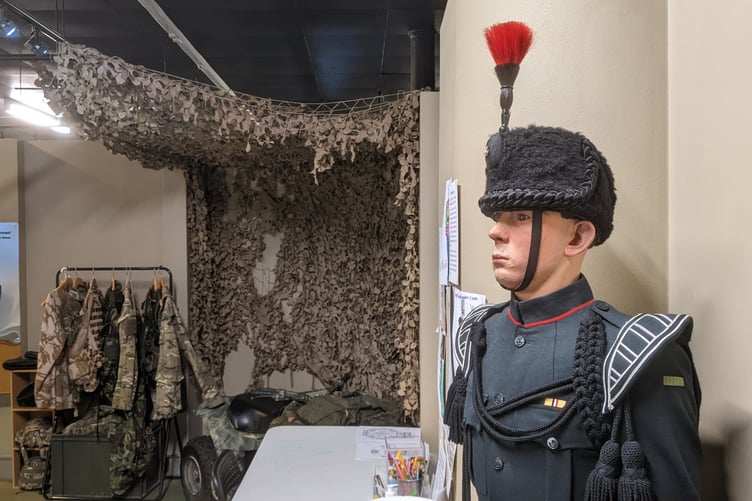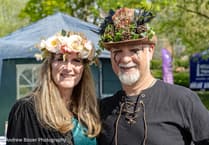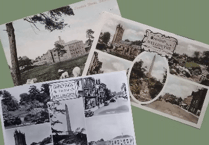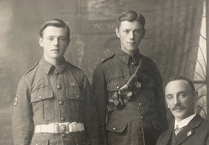AN exhibition by The Rifles Museum will be on display in Wellington’s Pop-Up Shop next week, leading up to the regiment receiving the ‘Freedom of Wellington’.
The exhibition will run from Monday, June 12 until Saturday, June 17, when The Rifles will march through the town and be presented by the town council with a ‘Freedom Scroll’.
It tells the story of The Rifles regiment from its formation in 2007 to the present day.
The Rifles’ historic and current connections to Somerset, and the traditions and ethos of the regiment will also be covered.
There will be a collection of objects relating to The Rifles, such as a modern British Army ration kit, an Afghan (Dari) language booklet, and a manual on battlefield casualty drills.
Visitors will also have an opportunity to handle and try on pieces of military uniform and kit, and pick up handouts explaining elements of the history and character of The Rifles - for example, why ‘Serjeant’ is spelt with a ‘J’ in The Rifles and why Riflemen have swords, not bayonets.
Colouring activities and stickers will also be available for younger visitors.
The Rifles Museum is located in Peninsula Barracks, Winchester, Hampshire, and covers the history of the British Army’s largest infantry regiment, from formation through the wars in Iraq and Afghanistan, to more recent operations.
It also tells the story of life in The Rifles, including training, sport, art, and more.
A remembrance space in the museum is dedicated to all Riflemen who have been killed in action since 2007.
The museum shares a building with the Royal Green Jackets Museum, which covers one of the four forming regiments of The Rifles and its antecedent regiments.

Both museums are part of The Rifles Museums Network, which includes museums and collections spread across the country.
In the Westcountry, these include Bodmin Keep - Cornwall's Army Museum, Somerset Military Museum (Taunton), Soldiers of Gloucestershire Museum (Gloucester), The Keep Military Museum (Dorchester), and The Rifles Berkshire and Wiltshire Museum (Salisbury).
A key battle honour of The Rifles, one of the 34 displayed on the regiment’s belt badge, was the Battle of Waterloo (1815), which saw Field Marshal Arthur Wellesley, 1st Duke of Wellington, lead his coalition army to victory over the French forces of Emperor Napoleon Bonaparte.
Wellington’s army included five antecedent regiments of The Rifles, the 28th (North Gloucestershire) Regiment of Foot, 32nd (Cornwall) Regiment of Foot, 51st (2nd Yorkshire West Riding) Regiment of Foot (Light Infantry), 52nd (Oxfordshire) Regiment of Foot (Light Infantry), and 95th (Rifles) Regiment of Foot.
A sixth antecedent, the 54th (West Norfolk) Regiment of Foot, was operating close by in support.
A handout ‘Wellington and Waterloo’ will be available in the Pop-Up Shop, in Fore Street, for anybody who wants to know more about actions of The Rifles antecedent regiments at Waterloo.
The Pop-Up Shop exhibition will be installed and staffed by The Rifles Museum’s assistant curator James Fenton, and volunteers from the Wellington community.
It will be held with support from members of Wellington Museum.





Comments
This article has no comments yet. Be the first to leave a comment.